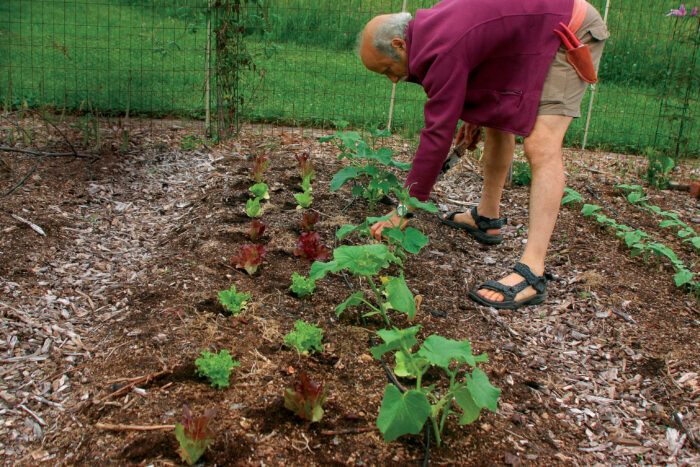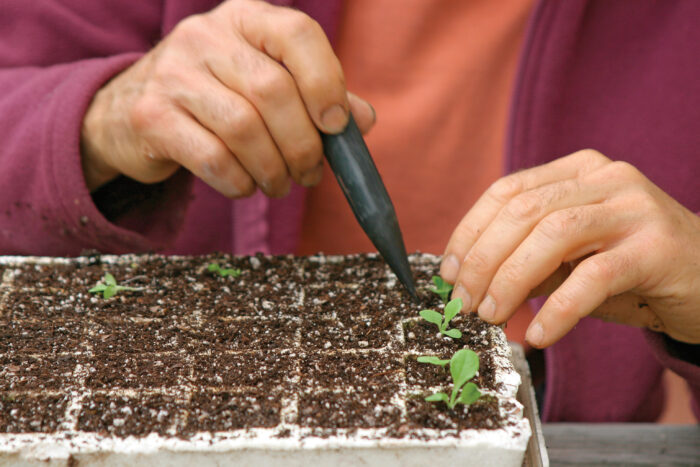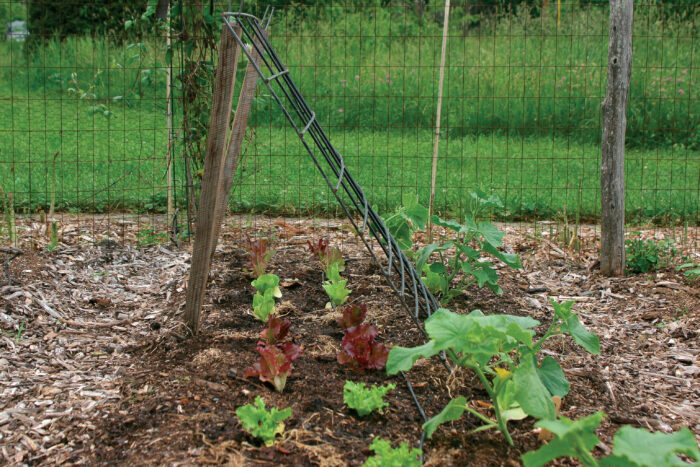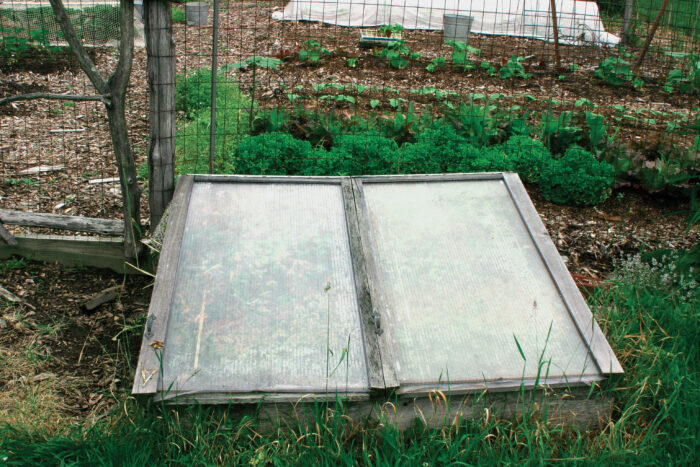Lettuce in Every Season
Start it early, sow it often, and eat it all year

Lettuce shows up in almost every vegetable garden and in almost every salad for good reason: It’s a powerful source of vitamins and minerals, all offered up with few calories, and it’s easy to grow. Plus, fresh-grown lettuce tastes great. It’s also one of the first vegetables to be sown and harvested in the garden.
Once spring and early summer pass, though, so does lettuce—from most gardens, at least. This transiency is due, in part, to early-season sowing, which is too often the only planting of the season. If you only plant once, spring-sown lettuce will bolt when the long, hot days of summer arrive, leaving you with tough, bitter leaves. With a little planning and some extra planting, however, you can have fresh, edible lettuce throughout the year. I use a few simple garden practices to make this happen.

Repeat sowings yield a steady harvest
Beginning in midwinter, I start the first of my lettuce seed in containers for later transplanting into the garden. This step allows me to begin the season a few weeks earlier than if I had to wait for the ground to get warm enough for direct sowing. In some parts of the country, you may be able to start sowing seeds as early as late fall, depending upon where you garden and what facilities you have available, such as a greenhouse, a cold frame, or grow lights.
To start my seeds, I sow up to four pinches of seeds—each of a different variety and in its own row— in a small flat indoors. I start rows of seeds in small flats rather than larger cell packs because germination requires higher temperatures than growing, and higher temperatures are easier to achieve in a smaller area. Plus, the small flat takes up less space, and I waste fewer seeds this way. As soon as the seeds sprout, I move the flat to a location with bright light—next to a south-facing window, in a greenhouse, or a few inches from fluorescent lights—and let the seedlings grow for a few more days until their seed leaves fully expand.
Pricking out (the transfer of crowding sprouts to individual containers or cells) is the next step, which takes place—depending on the temperature—one to two weeks after sowing. The new home for the seedlings could be the six-packs in which vegetable and flower seedlings are often sold or individual containers; I use the self-watering accelerated propagation system (APS) from Gardener’s Supply Company. Each seedling needs only about a square inch of space for the month or so that it will spend in the cell or container.

Lee’s favorite lettuce varieties
For each of these varieties, you can pick a few leaves or lop off the whole plant and let it grow back for another harvest. For the butterhead types, I prefer to wait for a fat, juicy head to form before I harvest it.
- ‘Black Seeded Simpson’: large, loose, crinkly, light green leaves; bolts readily in hot weather
- ‘Buttercrunch’: butterhead; soft heads of pale, buttery leaves enclosed in a rosette of dark green leaves; slow to bolt
- ‘Freckles’ (‘Trout Back’, ‘Forellenschluss’): green with wine red freckles; slow to bolt
- ‘Parris Island Cos’: crunchy, thick, juicy, sweet leaves forming large torpedo-shaped, upright heads; bolts in hot weather
- ‘Pirat’ (‘Sprenkel’, ‘Brauner Trotzkopf’): butterhead; light brown pebbling of leaves; somewhat bolt resistant
- ‘Red Sails’: large plant with frilly, purple-splashed red leaves; slow to bolt
- ‘Salad Bowl’: scalloped leaves; quick to mature and slow to bolt
- ‘Winter Density’ (‘Craquerelle du Midi’): butterhead; compact heads with dark green leaves (head elongates somewhat like a romaine when mature); cold tolerant and slow to bolt
Good growing conditions—including adequate light, moisture, and fertility—bring the seedlings to the next stage: planting out. Lettuce should be planted outdoors after the chance of a hard freeze is past, about four weeks before the average date of the last killing frost. The lettuce roots should be just filling their cells, which typically takes a month or so but will vary with temperature and growing conditions. This pregrown lettuce will be ready to plant in rows or pop into the ground at odd spots, such as between larger vegetable or flower plants that have yet to fill their spaces or where other vegetables have been harvested. The transplants can take some frost but will need covering if temperatures fall below 30°F.
I sow pinches of lettuce seed every couple of weeks from early spring through fall to keep a steady supply of young plants whose leaves are succulent and tasty. The whole process can end up yielding a lot of lettuce, but don’t feel obligated to plant out or even eat every single head you produce. Lettuce seed is relatively cheap, especially when you use only a pinch at a time.

Healthy lettuce loves nitrogen
Lettuce, like other leafy vegetables, grows and tastes best under optimal growing conditions. It likes nitrogen most of all. I maintain fertile, nitrogen-rich soil by applying a 1- to 2-inch-deep layer of compost on top of the ground each autumn where I know my lettuce will be going the following year.
Protect your lettuce from extremes
Once I have lettuce growing consistently through the season, my next technique for year-round lettuce is to protect the planting as necessary for seasonal changes and weather conditions. This includes extreme heat and extreme cold.

Late-winter and early-spring sowings need protection from the cold, so my very first plantings go into the greenhouse. Later-spring plantings, which go outdoors, get protection beneath the cover of my cold frame or from various cloches or row covers, which I use to temporarily cover my garden beds.
Summer plantings are subject to heat and the burning sun, which may cause early bolting. Although young plants are less likely to bolt than older plants during the long, hot days of summer, shading further reduces this possibility. I plant summer transplants in the shade of other plants, such as tomatoes, or beneath trellises on which vines are growing.
When temperatures plummet again in autumn, an additional layer of floating row cover provides a few more degrees of cold protection, keeping lettuce crisp and tender while temperatures drop into the low teens.
The last transplants of the year go back into the greenhouse, completing the cycle. With short days and cool winter temperatures (down to 35°F) in my greenhouse, these transplants grow slowly but fast enough to keep garden-fresh lettuce ready for salad year-round.












Comments
Log in or create an account to post a comment.
Sign up Log in